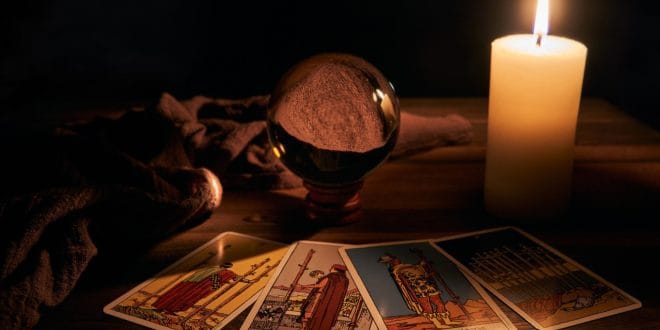Choosing a tarot deck can feel overwhelming, especially with so many options available. From classic designs like the Rider-Waite-Smith to modern, artistic decks, each tarot deck has its own unique style, energy, and symbolism. Whether you’re a complete beginner or an experienced reader looking for something new, finding the right deck is a deeply personal journey.
In this guide, I’ll walk you through how to choose the perfect tarot deck that feels aligned with your intuition and goals. I’ll also share practical tips to help you connect with your deck and start your tarot journey with confidence.
1. Understand the Purpose of Your Tarot Deck
Before you start exploring decks, think about why you want a tarot deck. Are you seeking spiritual guidance, personal growth, or a way to help others? Different decks may suit different intentions.
Questions to Ask Yourself:
- Am I looking for a beginner-friendly deck to learn tarot basics?
- Do I want a deck with specific themes (e.g., nature, mythology, or modern life)?
- Will I use the deck for self-reflection, creative inspiration, or professional readings?
Example: If you want a deck for self-discovery and deep reflection, you might prefer a deck with rich, symbolic artwork that invites introspection.
2. Familiarize Yourself with Tarot Deck Types
There are several popular types of tarot decks, each with its own structure and style. Understanding the differences can help you find a deck that resonates with you.
Common Tarot Deck Types:
- Rider-Waite-Smith (RWS)
- The most widely used and beginner-friendly deck.
- Features clear, symbolic imagery that forms the basis for many modern decks.
- Ideal for those learning tarot for the first time.
- Thoth Tarot
- Created by Aleister Crowley and Lady Frieda Harris.
- More complex and abstract, with heavy occult and esoteric symbolism.
- Suitable for advanced readers who enjoy deep symbolism and philosophy.
- Marseille Tarot
- A historical deck with simple, stylized illustrations.
- The Minor Arcana lacks detailed scenes, making it harder for beginners to interpret.
- Ideal for those interested in traditional tarot history.
- Modern or Themed Decks
- These decks often have unique artwork and themes, such as animals, pop culture, or mythology.
- Great for readers who want a deck that reflects their personality or interests.
3. Look for a Deck That Speaks to You
Tarot is an intuitive practice, so it’s important to choose a deck that feels right. The artwork, colors, and energy of the deck should resonate with you on a personal level.
How to Connect with a Deck:
- Browse decks in person: If possible, visit a metaphysical store to hold and explore different decks.
- Look at sample images online: Many tarot publishers and creators share sample cards on their websites or social media.
- Notice your first impressions: Do you feel drawn to the imagery? Does the deck inspire curiosity and excitement?
Example: If you’re drawn to nature and animals, a deck like the Wild Unknown Tarot or Animal Spirit Tarot may resonate with you.
4. Consider the Deck’s Artwork and Style
Tarot decks vary widely in artistic style, from traditional illustrations to modern, abstract, or whimsical designs. Since tarot is a visual tool, the artwork should inspire you and help you interpret the cards intuitively.
Things to Consider:
- Do you prefer vivid, colorful artwork or minimalist designs?
- Are the characters and scenes relatable to you?
- Does the artwork help you understand the card’s meaning without needing a guidebook?
Tip: If you’re new to tarot, look for a deck with illustrated Minor Arcana (not just plain symbols). This will make it easier to interpret cards intuitively.
5. Check the Guidebook and Card Meanings
Some tarot decks come with detailed guidebooks that explain the meanings of each card, while others provide only a brief pamphlet. If you’re a beginner, a well-written guidebook can help you learn the symbolism and interpretations more easily.
What to Look for in a Guidebook:
- Does it explain both the upright and reversed meanings of each card?
- Does it include spreads and tips for beginners?
- Is the tone of the guidebook easy to understand and relatable?
Example: Many modern decks come with beautifully written guidebooks that include affirmations, reflections, and journal prompts for each card.
6. Think About the Deck’s Energy and Theme
Some tarot decks are designed with specific themes or energies in mind. Choosing a deck that aligns with your interests or spiritual beliefs can enhance your connection to the cards.
Popular Tarot Themes:
- Nature and Animals: For readers who feel connected to the natural world (e.g., Wildwood Tarot or Spirit Song Tarot).
- Mythology and Folklore: Decks inspired by ancient myths and archetypes (e.g., Mythic Tarot or Gods and Titans Oracle).
- Modern Life: Decks that reflect everyday experiences (e.g., Modern Witch Tarot or Next World Tarot).
Example: If you have a strong connection to Celtic mythology, a deck like the DruidCraft Tarot might deepen your readings.
7. Read Reviews and Get Recommendations
If you’re unsure which deck to choose, reading reviews and recommendations can provide helpful insights. Many tarot enthusiasts share their experiences with different decks on blogs, YouTube, and social media.
Where to Find Reviews:
- Tarot blogs and websites
- YouTube deck walkthroughs and unboxings
- Online tarot communities and forums
Tip: Pay attention to reviewers who share similar goals or interests in tarot. Their experiences may help you narrow down your options.
8. Trust Your Intuition
Ultimately, the best tarot deck for you is the one that feels right. Even if a deck isn’t highly recommended by others, it may still be perfect for your needs. Your intuition is a powerful guide—trust it!
Signs You’ve Found the Right Deck:
- You feel excited or comforted when looking at the cards.
- The deck feels like an extension of your energy and personality.
- You can imagine yourself using the deck regularly for readings.
Example: You might unexpectedly come across a deck you’ve never heard of before but instantly feel a strong connection to its imagery and symbolism.
9. Don’t Be Afraid to Start Simple
If you’re feeling overwhelmed by all the options, start with a classic deck like the Rider-Waite-Smith. Its straightforward symbolism and widely available resources make it a great foundation for learning tarot. Once you become more confident, you can explore other decks that match your style.
10. Allow Yourself to Evolve with Tarot
As you grow in your tarot practice, your relationship with your deck may change. You might feel called to explore new decks that reflect different stages of your spiritual journey. This is completely normal—tarot is a lifelong practice of self-discovery and growth.
Choosing the perfect tarot deck is a deeply personal process that reflects your intuition, interests, and spiritual needs. By considering factors like artwork, theme, and guidebook support, you can find a deck that feels both inspiring and meaningful. Remember, there’s no “right” or “wrong” choice—what matters most is that you feel connected to your deck.
Ready to start your tarot journey? Explore your options, trust your intuition, and let the cards guide you!
 Lifeved The Keys to a Better
Lifeved The Keys to a Better



 by
by